Images of Research: 2021 to Present
2025

THEATRE FOR CHANGE
FIRST PLACE WINNER + PEOPLE'S CHOICE WINNER
VALENTINE UKOH
WRITTEN DESCRIPTIONThis image captures an open-air theatre performance unfolding in a rural community setting. The audience, composed of local residents seated on benches and the bare ground, is visibly engaged—some leaning forward, others responding with laughter and gestures. At the center, actors use minimal props and vivid expressions to dramatize a pressing community issue. This moment symbolizes the transformative power of theatre when rooted in familiar spaces, languages, and cultural practices.
My research explores Theatre for Development (TfD) as a dynamic tool for communicating change and development. This image embodies how participatory theatre creates shared spaces for dialogue, awareness, and collective problem-solving—where community voices are not only heard, but activated toward meaningful social transformation.
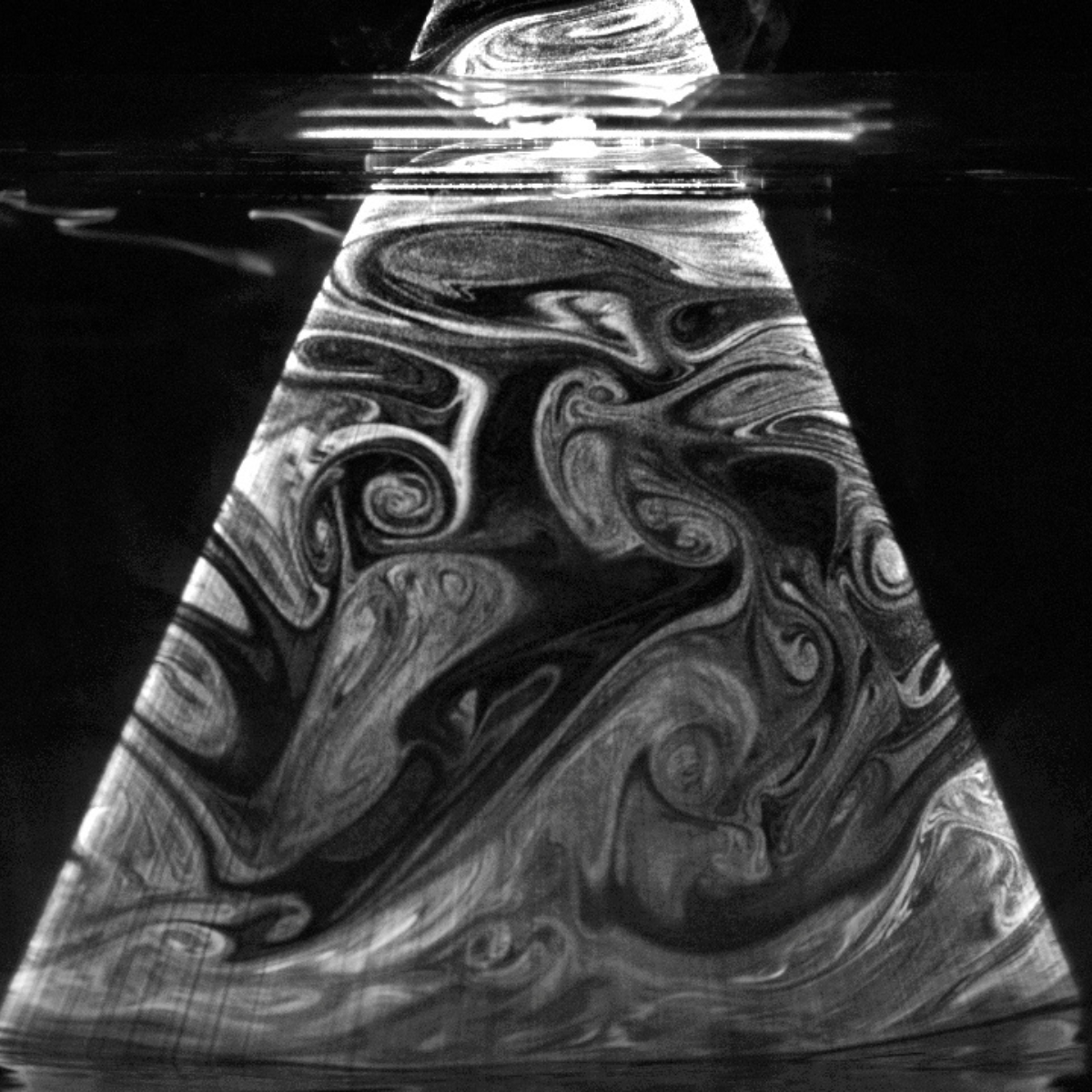
FLOWING INSIGHTS: ILLUMINATING TURBULENCE IN SEWER AIRFLOWS
SECOND PLACE
KHALED MOHAMED
WRITTEN DESCRIPTIONSewer odours have become a significant urban concern, notably affecting communities in Edmonton such as Steinhauer and Bonnie Doon. Our research addresses these challenges through sewer airflow modeling and experiments. This grayscale image illustrates intricate turbulent airflow patterns, clearly showing vortices and recirculation zones responsible for odour dispersion.
This study represents one of the first successful attempts to capture intricate airflow features such as Kelvin-Helmholtz instabilities, and it introduces an innovative technique for accurately measuring low air velocities in sewer systems. This visualization not only deepens the understanding of airflow movement and odour transport in sewer systems but also informs more effective ventilation designs to mitigate odours and enhance urban environmental quality.
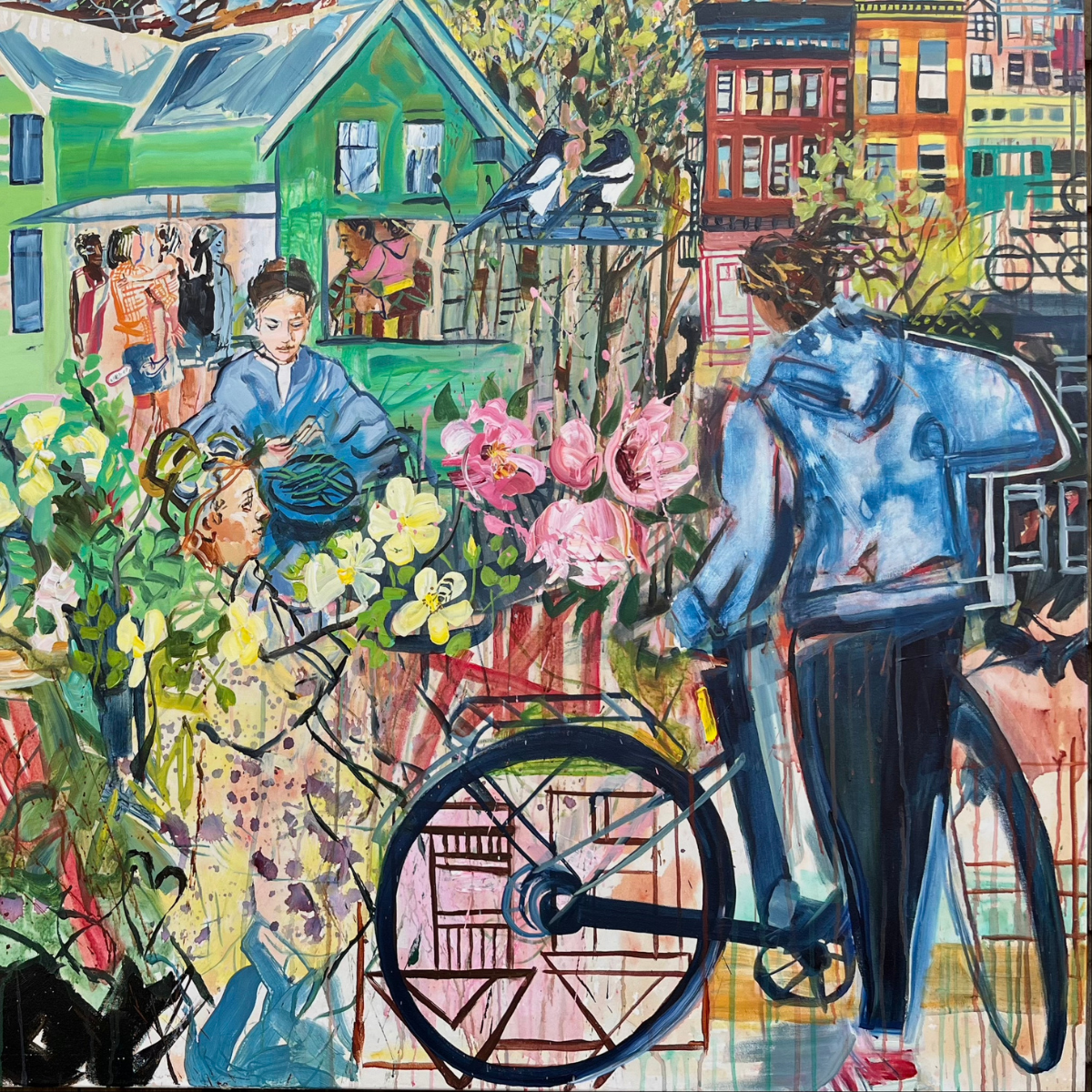
EMERGENT LANDSCAPES: URBAN GARDENS AND BICYCLE INFRASTRUCTURE EXPLORED IN PAINTING THROUGH THE LENS OF HUMAN ECOLOGY - MATERIAL CULTURE
THIRD PLACE
JILL THOMSON
WRITTEN DESCRIPTIONThis research painting represents spatial interior and exterior relationships of material culture within the dense confines of cities in North America and ancestral Holland. It is a personal remembering and observing of unexpected entanglements among buildings and wild spaces, kitchens and gardens, sitting rooms and forests, where vibrant cities with the familiar vernacular of neighbourhood architecture and public space are travelled on multiple planes. Paths are created by people walking around homes, front yards and gardens and by cycling past local shops and green spaces.
The complex interconnectivity among humans, things and the natural world are rendered intuitively through washes, drip marks, and brush strokes. Memories of material relationships—riding and discovering balance on a Dutch-styled bike and helping my children to bike—are a ‘coming home’ to ancestral landscapes that give structure to the painting. Material things created by humans transcend time through memory and overlay places and spaces to create a sense of belonging. The painting’s pathways afford renewed connections to cities, bring spaces alive, and provide people with agency, balance and possibility.
2024
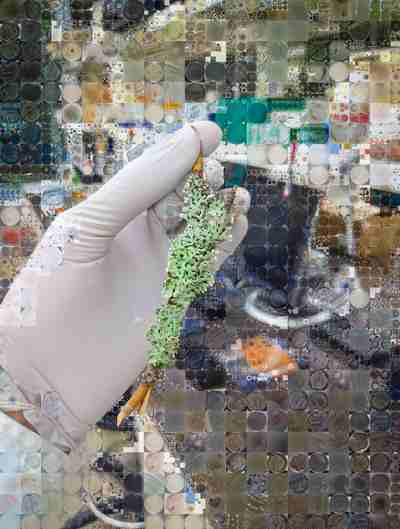
MOSAIC OF SYMBIOSIS, MOSAIC OF LIFE
WINNER
ARSENIY BELOSOKHOV
WRITTEN DESCRIPTIONAt a glance, this image is a snapshot of scientific discovery—a researcher holding a lichen. Look closer, and it transforms into a tapestry of petri dishes, each containing unique life forms, living together in a delicate balance, all derived from a single lichen. This piece is my ode to the beauty and intricacy of lichen communities, each one a microcosm of the interdependent networks that weave through our own society, inviting us to rethink our understanding of life’s interconnected nature.
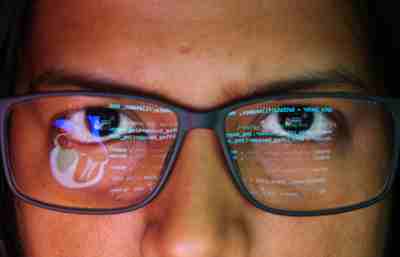
DECODING THE HEART
SECOND PLACE
ISHANI DASGUPTA
WRITTEN DESCRIPTIONThe image portrays the synergistic relation between the two main aspects of my research – medical image analysis and coding strategies. I dynamically engage with both, symbolized by the reflections seen within the frames. The aim is to efficiently and accurately identify the left ventricle (LV) from 3D heart ultrasound (echocardiography) images.
By examining heart images, I am developing a machine learning (ML) assisted automated system that can efficiently and accurately locate the LV and analyze heart function. Working with cardiologists at the University Hospital, I strive to improve the efficiency of identifying heart diseases. I design, code, and train neural networks that continuously learn the principal features in these heart images. Once the trained ML model has generated its predicted outputs, I use medical imaging software to view, examine, and compare these ML outputs with the expert LV identification.
In my research, the fundamental interplay between these two domains is essential for advancing the understanding and capabilities of cardiovascular imaging.
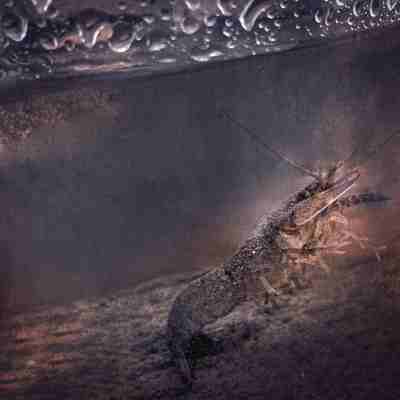
SWIMMING IN ASH
THIRD PLACE
JENELLE MCCUAIG
WRITTEN DESCRIPTIONWildfires are drastically increasing in prevalence and severity worldwide, exacerbated by warmer and drier climates. Fires are considered to be a terrestrial issue, with landscapes burning, habitat destruction, loss of life, and poor air quality. While none of these effects should be dismissed, it is imperative to recognize that aquatic life is also at risk; water increases in temperature, and ash is deposited into the water, leaching contaminants (like metals and organic combustion products). My research investigates the effect of ash on the respiration and metabolism of aquatic invertebrates, using crustaceans as a model organism, to better understand how they may survive and cope with wildfires, aiding in global species conservation. This image from my research trip to Australia features a freshwater crayfish (species: Cherax destructor) swimming in Australian bushfire ash, with flecks of ash littering its back and it reaching to escape the contaminated water. The orange enhancements represent a reflection of the flame colour underwater. Water does not burn, but even aquatic organisms cannot escape the impact of fire.
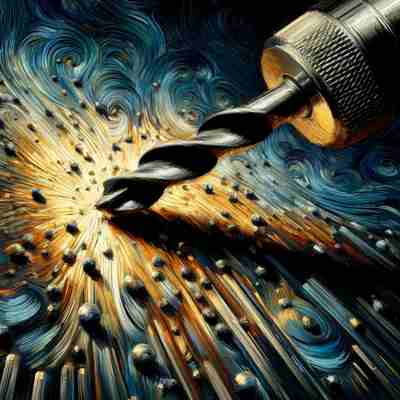
METALIC FLUIDITY: THE PLASTIC FLOW KEY
PEOPLE'S CHOICE
SOFIA SALAZAR
WRITTEN DESCRIPTIONFriction Stir Welding is a unique process that joins metal plates in a dance of creation. Through the rotation of the main tool composed of the pin and the shoulder, it stirs two metal pieces together. This technique forges a bond without melting the base materials, making FSW a cold state welding process that allows the joining of aluminum material. This process unfolds a tapestry of physical phenomena—among them, friction capable of generating temperatures just high enough to plastically deform metal. Despite extensive research, the intricate physics behind this innovative method retain their mysteries, eluding complete scientific understanding. This artwork encapsulates the beauty of Friction Stir Welding through a Van Gogh-inspired lens, where a luminous point marks the weld and is enveloped by concentric rings, echoing the signature circular isotherms characteristic of this process. The background, reminiscent of space, serves as a metaphor for the aerospace industry where FSW finds extensive application. It’s a visual symphony that celebrates the unseen artistry of metal joining, a convergence of science and art that transforms raw force into the most elegant metal union.
2023
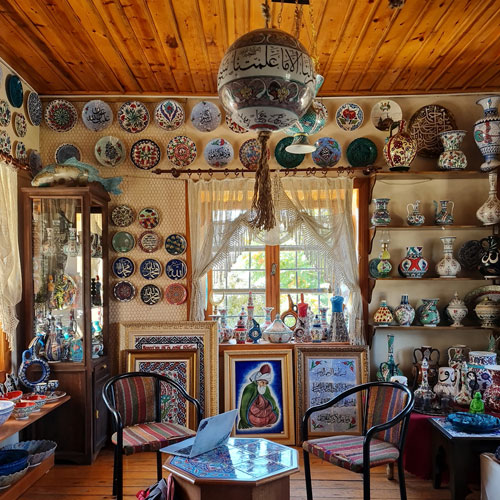
A RESEARCHER'S IDENTITY
WINNER
HANDE GÜR
WRITTEN DESCRIPTIONIn the summer of 2022, I traveled to Türkiye, my country of origin, for a four-month ethnographic research project on the rise of Sufi -mystical Islamic- practices among mainly young, middle-class women of Turkish origin. Throughout my fieldwork, I repeatedly asked my interlocutors the question, "Can you tell me about yourself?" Little did I know that there would come a time when I would need to retreat to a quiet room, retrieve my laptop, and turn the same question inward.
Anthropological fieldwork traditionally involved going to a 'foreign' place and describing 'the other' to academia upon return. However, studying a religion historically constructed as 'other' to the West requires self-reflexivity. As a young Turkish woman and daughter of a Sufi practitioner, I found myself questioning my position as an insider or a researcher in the field. With no one else to turn to, I took a seat and asked myself, "Can I tell a little bit about myself too, please?"
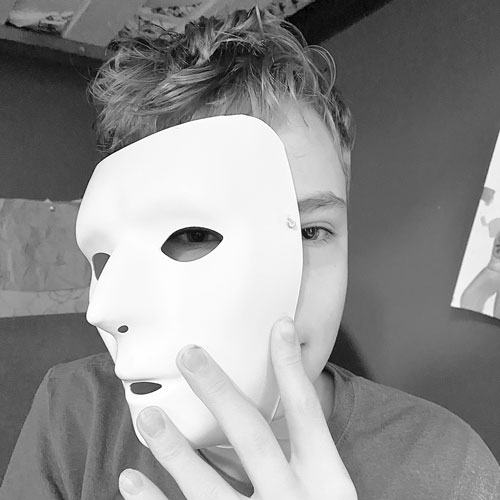
MASKS THAT HURT
SECOND PLACE
SHERI KLASSEN
WRITTEN DESCRIPTIONThis is a picture of my son wearing a mask. The picture was not easy to take – he is on the autism spectrum, and not only did he find the mask irritating, but he also had a hard time holding it to his face and looking at the camera. After he agreed to have the picture taken, I knew I only had a moment. And yet I happened to capture him looking at the camera through the mask.
Autistic youth, my son included, are often told to put on masks. Unlike the one pictured, these are virtual masks that health professionals use as a treatment to replace autistic tendencies with behaviors that are considered “normal”. Autistic self-advocates call this phenomenon “masking” and worry that it may do more harm than good. The sustained effort of opposing one’s natural tendencies has been shown to cause increased anxiety, exhaustion, loss of skills, and suicidality. My research will explore how a commonly used intervention for autistic youth, called social skills groups, influences their perception of self-esteem and well-being. By centering the voices of autistic youth, and their experience of learning to mask, I hope to promote awareness of how best to support these individuals.
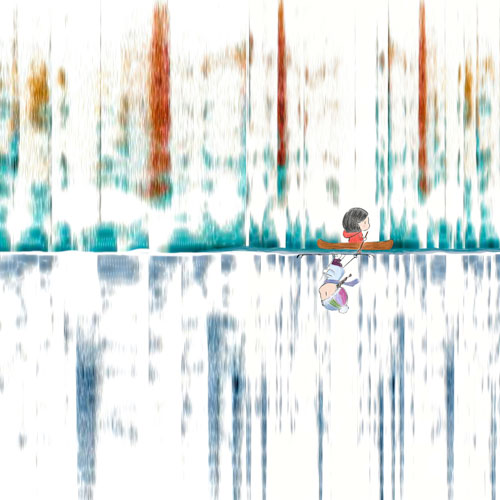
SPEECH-PRINT
THIRD PLACE + PEOPLE'S CHOICE
LUJIA YANG
WRITTEN DESCRIPTION“I feel like a different person when speaking another language.” a sentiment shared by many multilingual individuals. The mystery of such identity shifts may lie in the nuances of speech sounds. Just as everyone has a unique fingerprint, each of us also possesses “speech-prints”.
The image displayed here is my “speech-print”, the spectrogram of sentences spoken in two distinct languages. As a Mandarin-English bilingual, I feel profoundly different when speaking each language, and losing either would be like losing a part of my identity. Speaking Mandarin feels like taking a leisurely boat ride through a colorful landscape – relaxed and shiny, while speaking English feels like skiing down a steep mountain, where I must be brave and cautious at the same time. Despite these differences, the speech in both languages blends in certain ways and forms who I am. Like many other bilinguals, Losing either of these languages would be like losing a part of my identity.
Canada boasts over 200 languages. While considerable attention has been paid to teaching major languages, preserving heritage languages has received less attention. Through the collection and interpretation of speech from individuals with varying backgrounds and experiences, my study aims to investigate how individuals’ experiences shape their speech and how we can protect minority languages and their cultural heritage.
2022
Images of Research took a hiatus in 2022.
2021
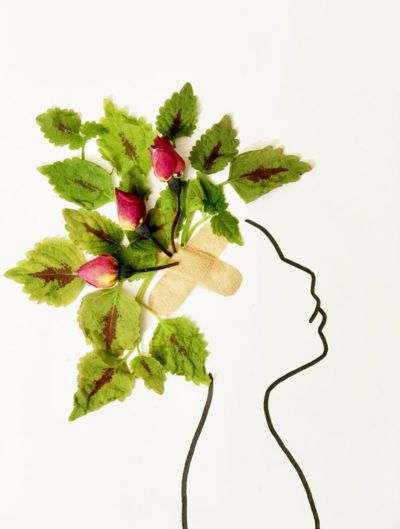
TURNING WOMEN'S TRAUMA INTO STRENGTH
WINNER
SARA NEKOUNAMGHADIRLI
WRITTEN DESCRIPTIONIn my research about ohtisiy (a word in the Cree language that conducts us to identify ourselves on the matrilineal principles), I learned more about the women from different generations in my society and their endeavors to empower themselves. In this research, I found that changing the role, responsibility and position of women throughout history has led to continuous progress in different aspects of their social life. Although women have encountered different challenges, they have employed strength-based approaches to resolving these problems. Women all over the world, are able to turn their personal or social trauma into strengths and effective actions! The image shows that the strength can be rebuilt and grown from any trauma.
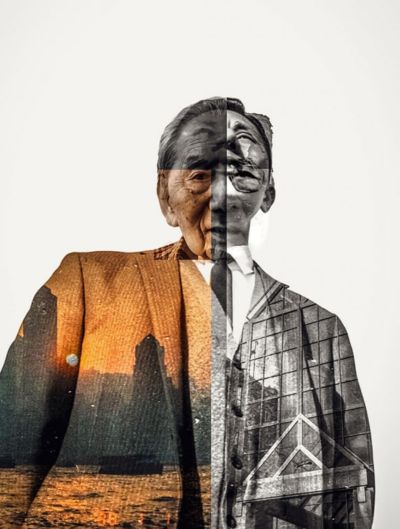
A CROSS TIME THROUGH DEMENTIA
SECOND PLACE
HEUNJUNG LEE
WRITTEN DESCRIPTIONThis image is an homage to my husband’s grandfather who inspired my doctoral research on temporality of persons living with dementia. This collage represents his porous realities that cross his childhood in Hong Kong/Macao, the period of the Second World War, and his late life in Canada.
The orange color highlights his perceived present – it crosses him at age 98 in a nursing home in Edmonton and time in HK in 1998. In this cross-time, he recognizes me, a recently introduced family member, but at the same time, he worries about me missing the ferry between Macao and HK. I imagine the orange light may move at any moment and create a different version of reality.
‘Age and Time disorientation’ is a common phenomenon lived by persons with dementia. My research counters the dominant discourse that diminishes personhood of persons with dementia as ‘out of mind’ and urges us to rethink different ways of being and living. Drawing on Performance theories and Disability Studies, my research argues people with dementia uniquely live with cross-temporality, that allows embodied engagements with exploded time – the radically new times with alternate constructions, directions, and durations.
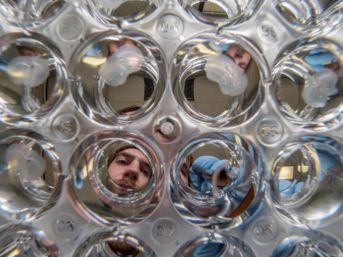
BRAIN GAMES
THIRD PLACE
BRIAN MARRIOTT
WRITTEN DESCRIPTIONSlice to D4. One after the other, the wells of the plate in front of me are methodically filled with brain slices, precisely cut by a vibrating blade. Each one thinner than a human hair, I delicately transfer each slice as they are cut to a collecting dish with a paintbrush. This self portrait peers through the dish as I collect the exact region of the brain my research revolves around: the claustrum. My research has shown that the claustrum connects to other parts of the brain in an organized manner, contrary to some previous literature. However, this is only one piece of a much larger game. With each move the field makes to advance our understanding of the claustrum, the claustrum offers perplexing countermoves that defy our expectations. We are in a chess game against the brain. The brains counterstrikes against our inquiries do not come out of malice, but simply due to biological complexity! Each step we propose is an assumption based on prior knowledge, of which we stand at the frontier of. And yet, for every setback or strange result that invalidates our assumptions, we push forward into the great unknown, ever wiser. The machine whirs as a new slice is cut. Slice to D5.
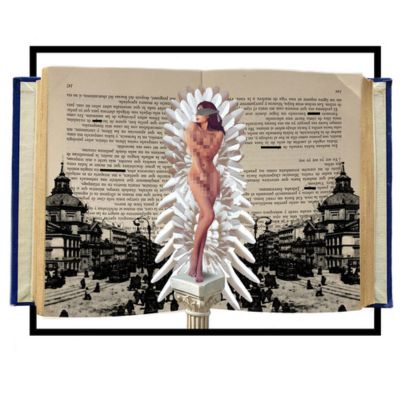
SURREALIST VENUS IN TRANSLATION
PEOPLE'S CHOICE (tied)
SOFIA MONZON
WRITTEN DESCRIPTION“What are the connections between censorship and translation? Studying the intersection of censorship and translation helps us define the power dynamics lurking in the circulation of literature. My research focus on literary exchanges that took place between North America, Spain, and Argentina (1950-1980). I analyze the Spanish translations of Sylvia Plath’s and Anaïs Nin’s The Bell Jar and Delta of Venus, as both were deemed morally subversive because of the sexual content they describe.
Due to the censorship mechanisms the two Spanish-speaking countries established, they are ideal contexts to investigate how literature travels by means of translation under authoritarian states. Censoring and translating are affective acts: they combine power, manipulation, and the adaptation of the other. Thus, studying the intersection of censorship and translation under dictatorial regimes offers the opportunity to approach this research through the lens of affect theory. This means underlining the interplay between literature, the emotional, and the political, as the image depicts through a censored translation of The Bell Jar, and a blurred, blind Venus standing in between such circulation.
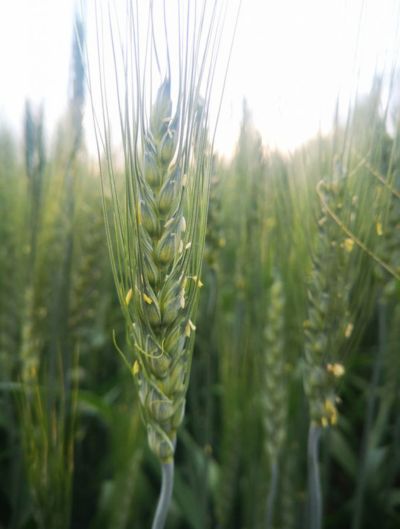
INEXTRICABLY TIED: ARE HUMANS AND WHEAT TRULY DIFFERENT?
PEOPLE'S CHOICE (tied)
HABBAL MAHAL
WRITTEN DESCRIPTIONPlants encompass every aspect of humanity; from maize to cassava, rice to canola, we have cultivated crops for 23,000 years. Yet, despite how vast our understanding of plants is, there exist misconceptions that they are inactive, insensitive, and incapable of perceiving and responding to environments.
Though sessile, the wheat stalk shown here is actively making decisions above- and belowground as to where to place its biomass to optimize nutrient, light, and water intake while balancing its upkeep of reproductive and defence mechanisms. This is where my research comes in. In my experiment, I placed nutrients between wheat plants to determine their placement of shoots and roots when facing difficult decisions regarding family, competition, and resources. Will they selflessly grow away from nutrients to allow kin to take them, or are familial connections disregarded when facing a large reward?
Increasingly we see plants, like humans, make decisions that will benefit themselves and their offspring, even at the cost of other family. Thus, though we differ greatly from plants, enough similarities in our motives begs the question ‘are we really that different from a stalk of wheat?’.